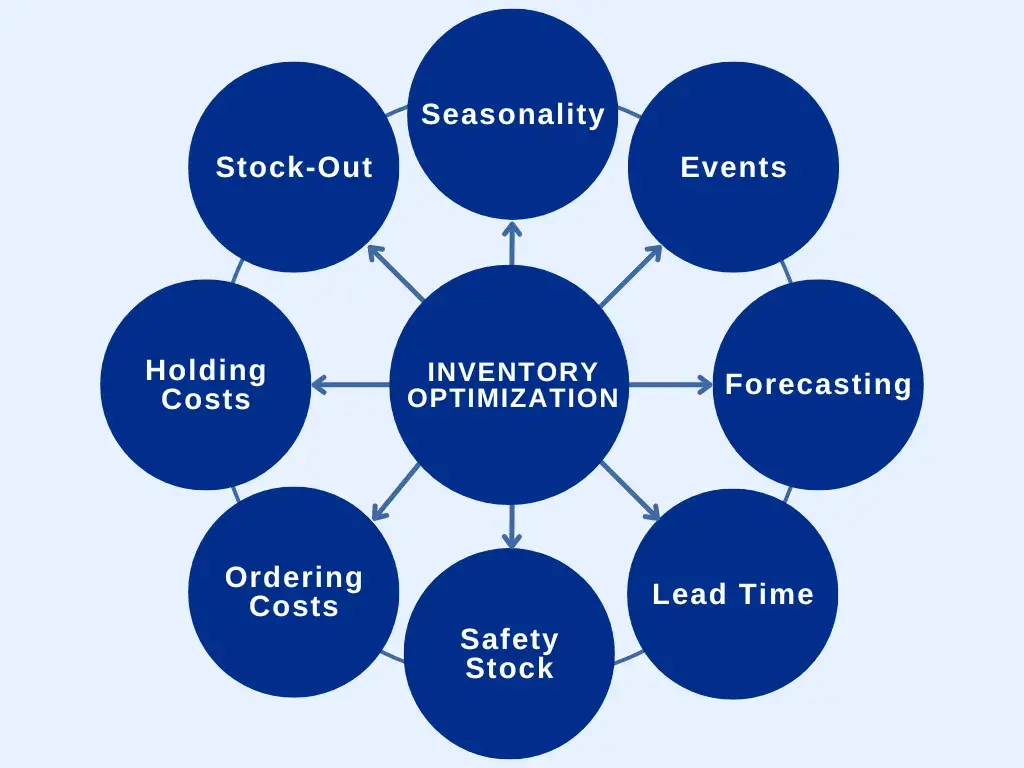
Inventory Management Tips for Optimized Supply Chains
In the bustling world of business, managing inventory is much like walking on a tightrope. Lean too much on one side, and you might face stockouts; sway heavily on the other, and you’re stuck with overstock. The goal? To tread that fine line with grace and confidence. This can be particularly challenging, but let’s dive into ways you can streamline your inventory management, ensuring your supply chain functions like a well-oiled machine.
Understand Your Demand
Let’s kick things off with a simple yet profound truth: knowing your customer demand is essential. It sounds straightforward, right? And it should be, as long as you stay vigilant.
Track your sales: By keeping a close eye on what sells and what doesn’t, you can predict future demands with better accuracy. Employ user-friendly tools to monitor sales trends over time, and you will gain a clearer insight into your customers’ preferences.
Seasonal forecasting: Seasons change, and so do people’s buying habits. Make sure to factor in holidays, events, and even weather patterns as they can significantly influence demand.
Embrace Technology
In our tech-savvy era, clinging to outdated methods can hold you back. Here’s where smart inventory management software comes into play. These powerful tools can automate the tracking of stock levels, order processing, and even generate predictions based on historical data. Plus, the beauty of cloud-based systems is that you can access your information anywhere, anytime—pretty handy, right?
Maintain Relationships with Suppliers
A strong relationship with suppliers can be the unsung hero of your supply chain. Regular communication can smoothen processes and open doors for negotiations. Remember, suppliers are partners in your success—they can offer flexible terms or faster delivery when you’re in a crunch.
Have a backup plan: Don’t put all your eggs in one basket. Having alternative suppliers can save the day if your primary supplier runs into trouble.
Inventory Accuracy is Key
Accuracy in inventory count is non-negotiable. Discrepancies can lead to overstocking or, worse, stockouts. Regular audits help maintain accuracy; you can choose from methods like annual physical counts, cycle counting, or even real-time inventory audits via RFID and barcoding systems.
Go Lean on Your Inventory
Ever heard of “Just-in-Time” (JIT)? It’s a strategy that keeps inventory lean and mean. The principle is to have just enough stock to meet demand and not a unit more. This approach can drastically reduce your storage costs and minimize the risk of unsold goods.
Monitor stock turnover: Keep an eye on how frequently your inventory sells. High turnover can be good, but it can also indicate a potential stockout. On the flip side, low turnover might indicate overstocking or a decline in product popularity.
Forecast Effectively
Navigating the complex world of inventory management without forecasting is like setting sail without a map. It’s vital to predict future sales based on various factors such as market trends, historical sales, and growth rates. But remember, the further out your forecast, the hazier it might get. Keep forecasts up-to-date and adjust them as new data comes in.
Smart Storage Solutions
Where and how you store your inventory can impact its accessibility and your employees’ efficiency. Optimizing your warehouse layout ensures the most popular products are easily accessible, while overstock or slow-moving items can be stored further back.
Emphasize organization: Maintain a clean, well-organized storage system. It not only saves time but also reduces errors and the frustration of not finding what you’re looking for.
Implement an Inventory Hierarchy
Not all goods are created equal, and not all should be treated the same way. Establish an inventory hierarchy:
ABC analysis: This approach divides inventory into three categories. ‘A’ items are high-value with low sales frequency, ‘B’ items are moderate in value and sales frequency, and ‘C’ items are low-value with high sales frequency. Each category can inform different management strategies for optimal efficiency.
Stay Flexible and Adaptive
The only constant is change, especially in business. Stay open to adapting your inventory management strategy as technology evolves, new trends emerge, and business needs change.
Continuous improvement: Regularly revisit and refine your processes. What works today may not be the best solution tomorrow.
Train Your Team, Equip Your Success
Your system can be top-notch, but if your team doesn’t understand it or the importance of accurate inventory management, it’s not living up to its potential. Invest in training your employees; an informed team is an empowered one.
Encourage a culture of inventory responsibility: Everyone should feel accountable for inventory accuracy. From the warehouse staff to the front office, make inventory management a shared goal.
Wrapping Up

Managing inventory is a dynamic puzzle, where every piece must fit together seamlessly to complete the supply chain picture. By understanding your demand, embracing technology, maintaining strong supplier relationships, ensuring accuracy, staying lean, forecasting effectively, employing smart storage, and prioritizing organization and training, you’re well on your way to an optimized supply chain. These practices don’t just reduce costs and improve customer satisfaction; they fortify your business against uncertainty and pave the way for sustainable growth.
Inventory management isn’t a one-size-fits-all deal—it’s a tailored suit that makes your business look and operate at its best. With these tips, you’re now equipped to tailor that suit perfectly to your company’s unique contours. Happy optimizing!